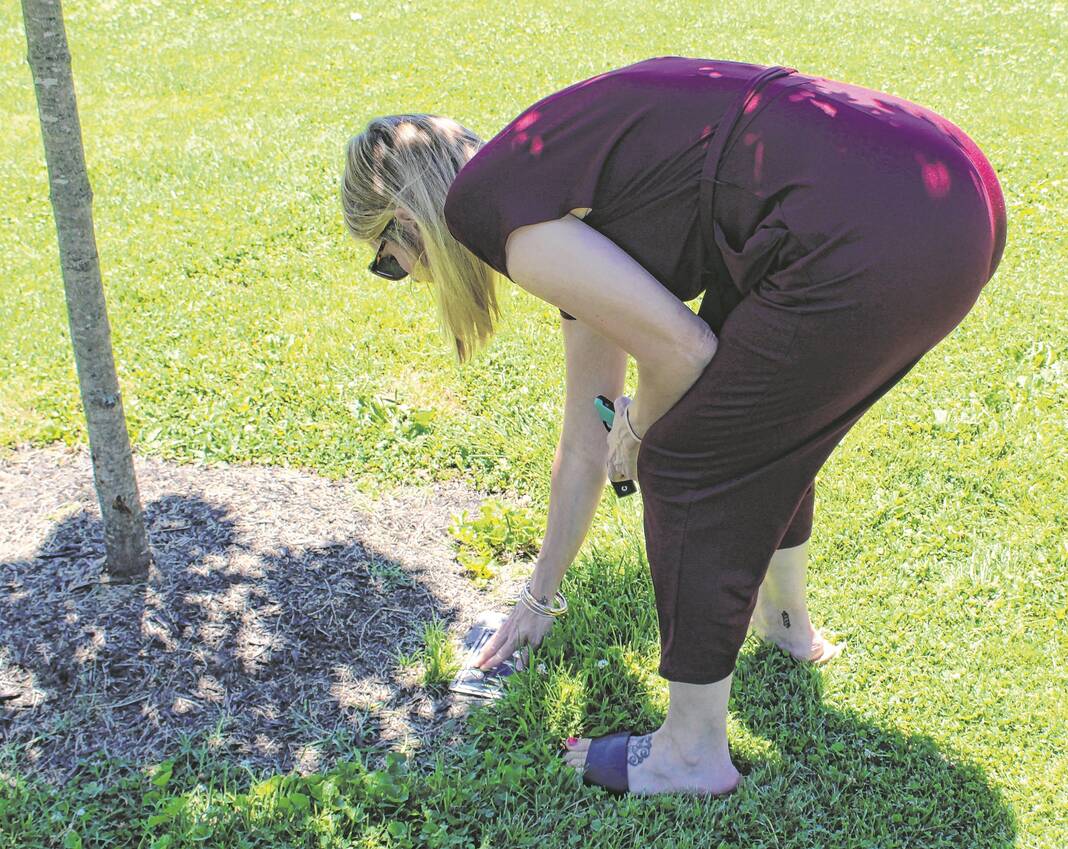
Stacy Findley bends to brush dirt off the memorial plaque at a tree placed at Shields Park to honor her brother, Clint Noble.
Lew Freedman | The Tribune
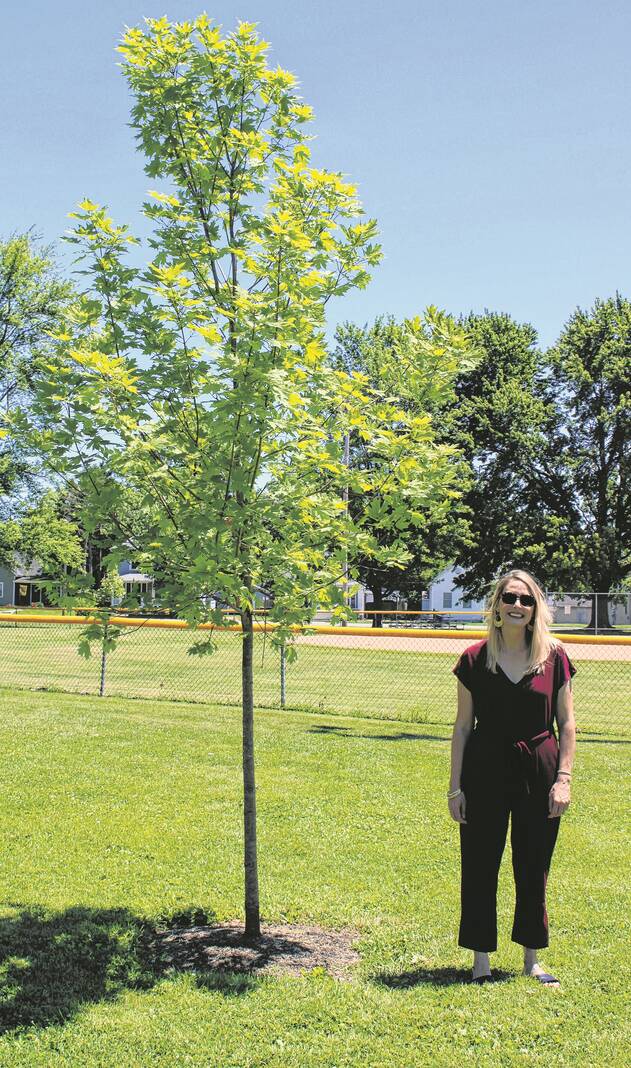
Stacy Findley stands next to the memorial tree at Shields Park placed as a remembrance to her brother, Clint Noble.
Lew Freedman | The Tribune
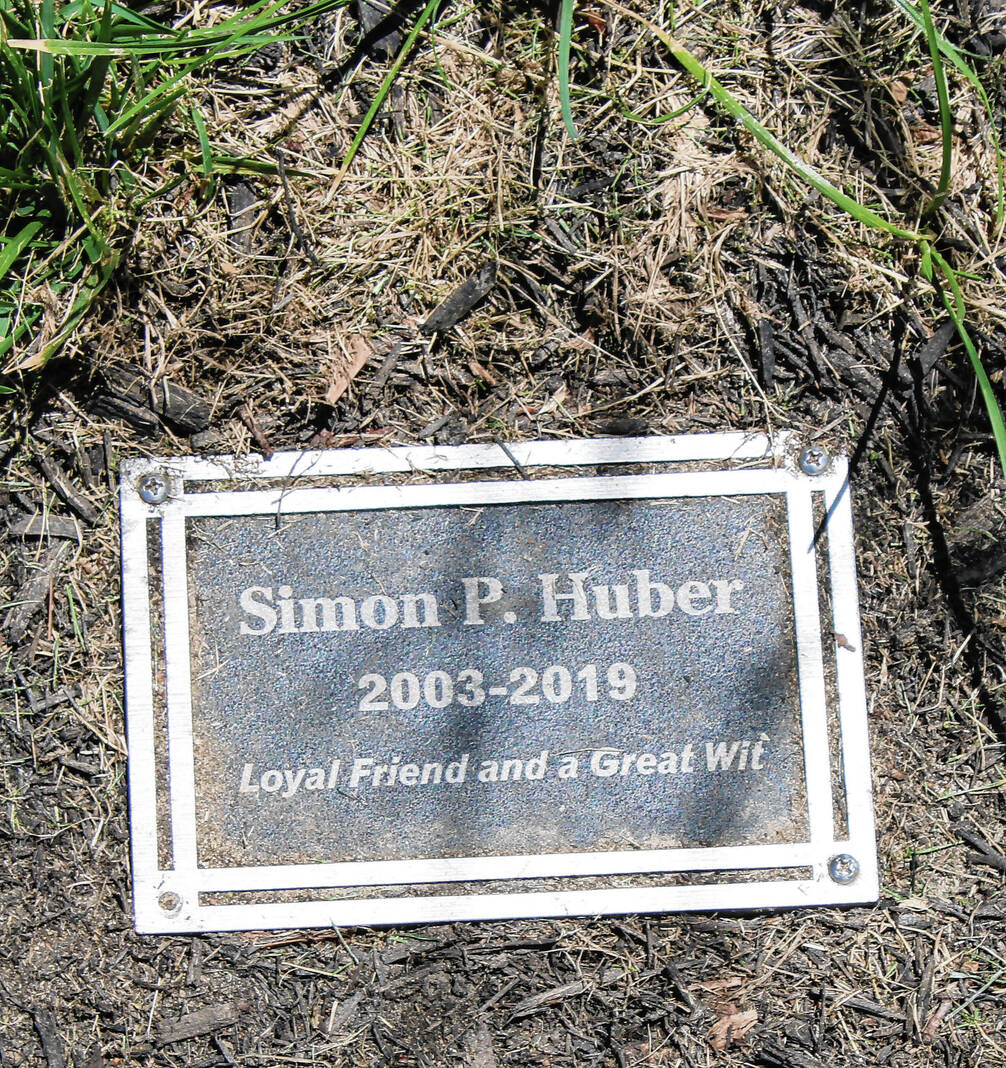
Plaque honoring Simon Huber at the base of his memorial tree at Gaiser Park.
Lew Freedman | The Tribune
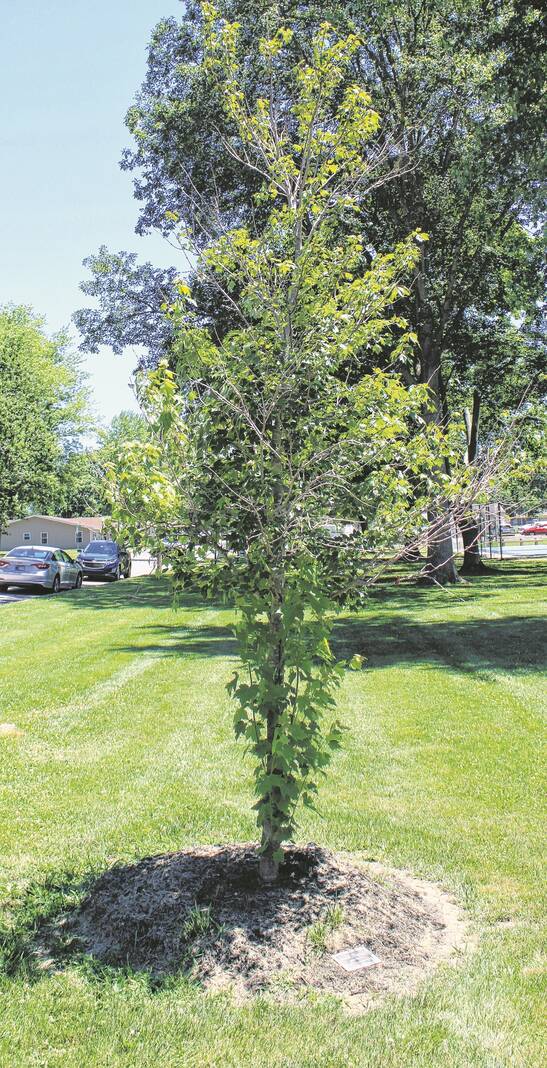
Maple tree planted as a memorial to Simon Huber at Gaiser Park to honor him as part of Seymour’s Memorial Tree Program.
Lew Freedman | The Tribune
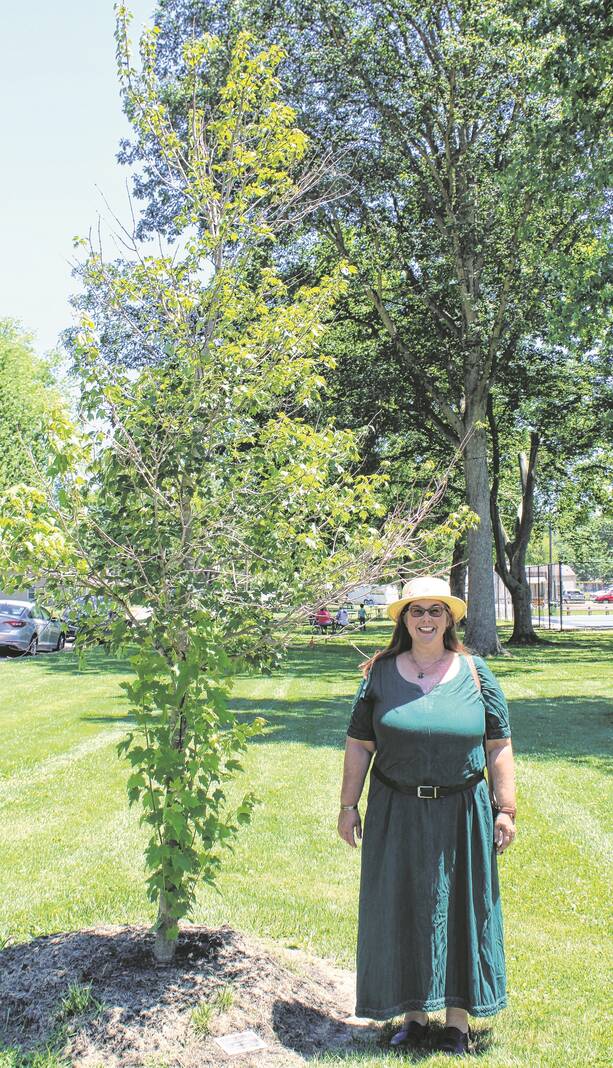
Bonnye Good stands by the maple tree planted at Gaiser Park honoring her son's good friend, Simon Huber.
Lew Freedman | The Tribune
Bonnye Good, standing 5-foot-5, had to crane her neck to look at the top of the young maple tree’s leaves barely moving in a very slight breeze on a hot day at Seymour’s Gaiser Park.
On this June day, when the air was a mostly still 90 degrees in the sunshine, this very personal tree standing about 12 feet tall and expected to grow and blossom into a much larger element in this natural landscape did its job as a reminder.
The memorial tree, a marker and a remembrance, featured a small plaque inlaid in the ground at its foot reading “Simon P. Huber, 2003-2019, Loyal Friend and A Great Wit.”
Good was glad to see the tree was flourishing, its height so notable.
“Simon was well over 6 feet,” she said of her son’s good friend.
Good, who lives near the park, is one of about 20 people who have invested in the two-year-old Seymour Memorial Tree Program.
Introduced by Stacy Findley, the city’s parks and recreation director, the program is one way for the community to encourage the planting of two trees for every one that is lost, either because of such insidious tree diseases as ash borer or damaged when hit by lightning in storms. In addition to planting a tree as a tribute to a loved one, relatives or friends can have a bench installed in a park.
“It has kind of been a pet project to me,” Findley said. “My overall goal is to increase our tree canopy. We plant two trees for every tree we take out.”
It is possible for a tree to be purchased and planted for as little as $150, Findley said, though the decorative black wrought iron benches may cost $750 or so.
“People can choose what kind of tree, a flowering tree, a deciduous tree or say, ‘My budget is this,’” Findley said. “We want this program to be available to everyone.”
Mayor Matt Nicholson credits Findley with jump-starting the program.
“I love the Memorial Tree Program,” he said. “It’s a great way to get trees back in the parks and a great way to remember our loved ones.”
Everyone likes trees
Findley said planting a memorial tree has appealed to people who had loved ones cremated and would not otherwise have a headstone.
“We’ve had people buy more than one,” she said. “You can also pick the location. There’s definitely flexibility. It may be in lieu of flowers. There may be a special connection between the deceased and the type of tree chosen for planting. You’re planting for 50 to 100 years down the road.”
Plaques, made either of a plastic material or concrete, are optional, costing as little as $20 but averaging $40.
Trees are universally popular and noncontroversial.
Findley’s passion for the project is well enough known at city hall that when her brother, Clint Noble, died at 34 of a drug overdose from an opioid addiction, her colleagues chipped in and purchased a memorial tree for him at Shields Park.
“I feel like my co-workers knew I would have wanted it,” Findley said.
The tree honoring Findley’s brother is a tulip poplar, the Indiana state tree, which can grow to 200 feet. On a recent visit to Shields Park, Findley stood in the budding shade of a 12-foot tree. She said some would shun talking about addiction, but bringing drug problems into the open can be helpful.
“There has always been a stigma behind addiction,” Findley said. “I think it’s important to talk about it. By all means, I think people should talk about it.”
Still gaining awareness
Although the Memorial Tree Program is fairly new and the city would like to continue expanding to fill needs and demands as they arise and it becomes better known, it is also open to families or others who wish to plant a tree to honor someone who even passed away years ago.
Chris Engleking, who is the Seymour city attorney, had a memorial tree planted to honor her mother-in-law, who passed away in 2011, long before the program was instituted.
When Engleking heard of the creation of the tree program, her first reaction was, “Wow! That’s pretty neat.”
Then she thought of her mother-in-law’s passion for colorful trees.
“She loved redbuds especially,” Engleking said. “They’re very pretty.”
Engleking’s family had a tree planted in Crossroads Community Park.
“It’s a nice green space, a walking park,” Engleking said. “It’s a nice way to remember her.”
One appeal of the Memorial Tree Program seems to be proximity. A tree planted nearby in a community park is accessible for visiting to those who live close by, even on foot.
While it may or may not be competition or even known to Seymour residents, there are federal programs that allow citizens to have a tree planted in a U.S. National Forest for $9.99. An individual can be honored in that way and a commemorative card will be mailed to the buyer. This program is called “a living tribute.”
The thrust of that idea is that it “benefits present and future generations.” It is stated every 1,000 tree seedlings planted will restore 4 acres of forest.
Seymour’s program is much smaller scale, although the trees planted are not mere saplings, Findley said, but larger rooted and thereby sturdier. Still, the overall aims of conservation and preserving woods and forests are the same for the local scene and the national program.
National forests are spread across the country, from the Chugach National Forest in Alaska to the Talladega National Forest in Alabama. Even the Hoosier National Forest in Indiana is a short drive from Seymour.
Seymour’s Amelia O’Neal said one of her best friends died of a drug overdose in 2021 and was cremated. When she heard of others buying memorial trees to honor loved ones, she also was inspired to do so. The tree seemed to be a special way to honor a friend in the absence of a gravesite.
“I think especially if there is not a burial and a place to go,” O’Neal said of the value of the Seymour Memorial Tree Program. “We were able to spread some ashes.”
Planting the tree in Gaiser Park was convenient.
“I live across the street,” O’Neal said. “I get to look at it every day.”
A symbol of strength
Good can do that, too. She lives only a short walk from the maple tree honoring her son’s good friend. There was a little bit of dirt over the plaque one day, but she brushed that away.
“We knew we had to do something,” Good said of she and the rest of the family. “We like the idea of the hardwood growing tall.”
Not only is the park just a few blocks from home, Gaiser was a regular spot for visits for years even before Simon’s tree became a focal point.
“It’s peaceful,” Good said. “It’s a peaceful way to remember him.”
Good knows the tree will grow from 12 feet to 20 feet to 50 feet and beyond and offer shade and shelter to others while the plaque will tell others a little bit about who Simon was.
